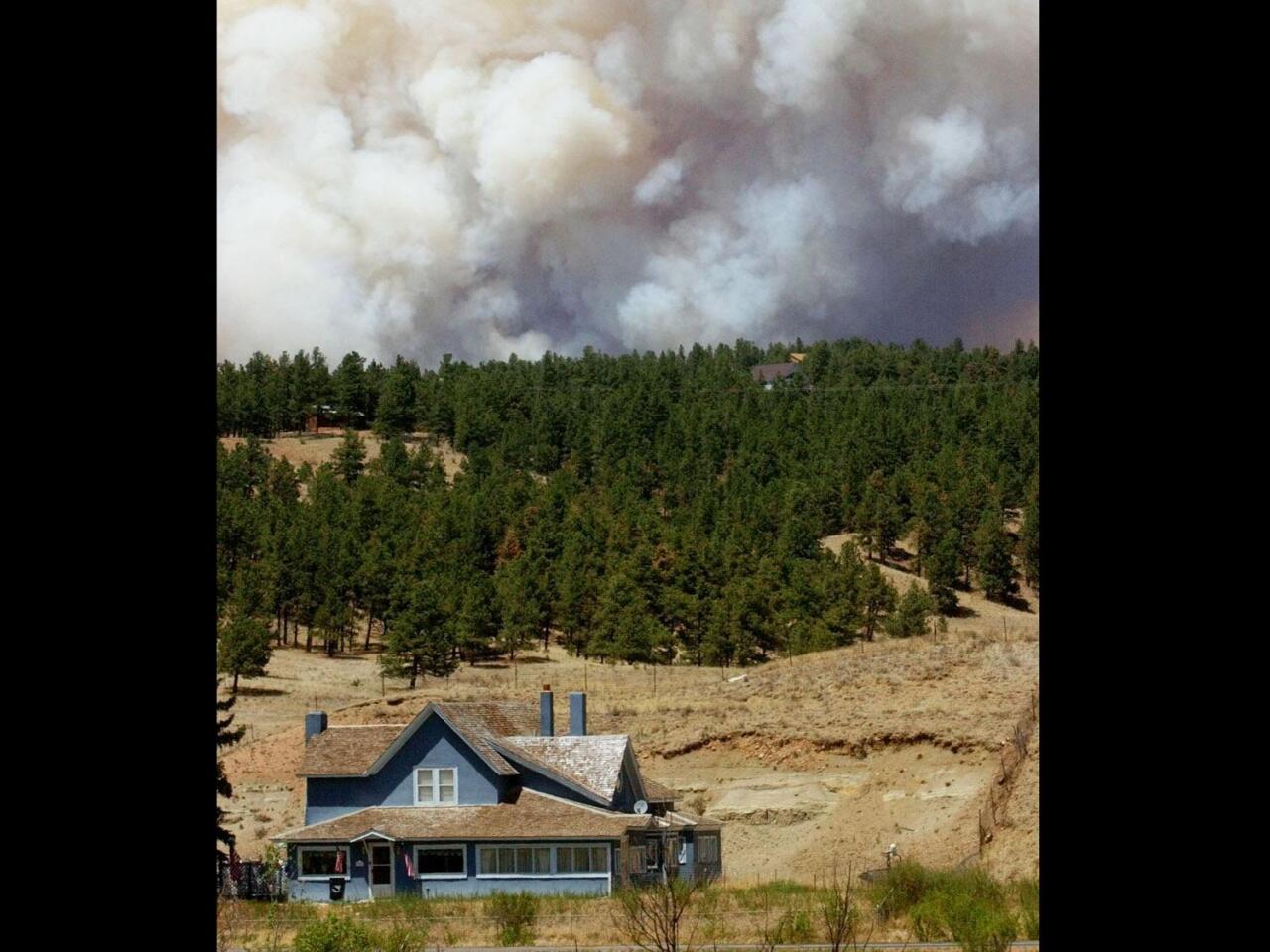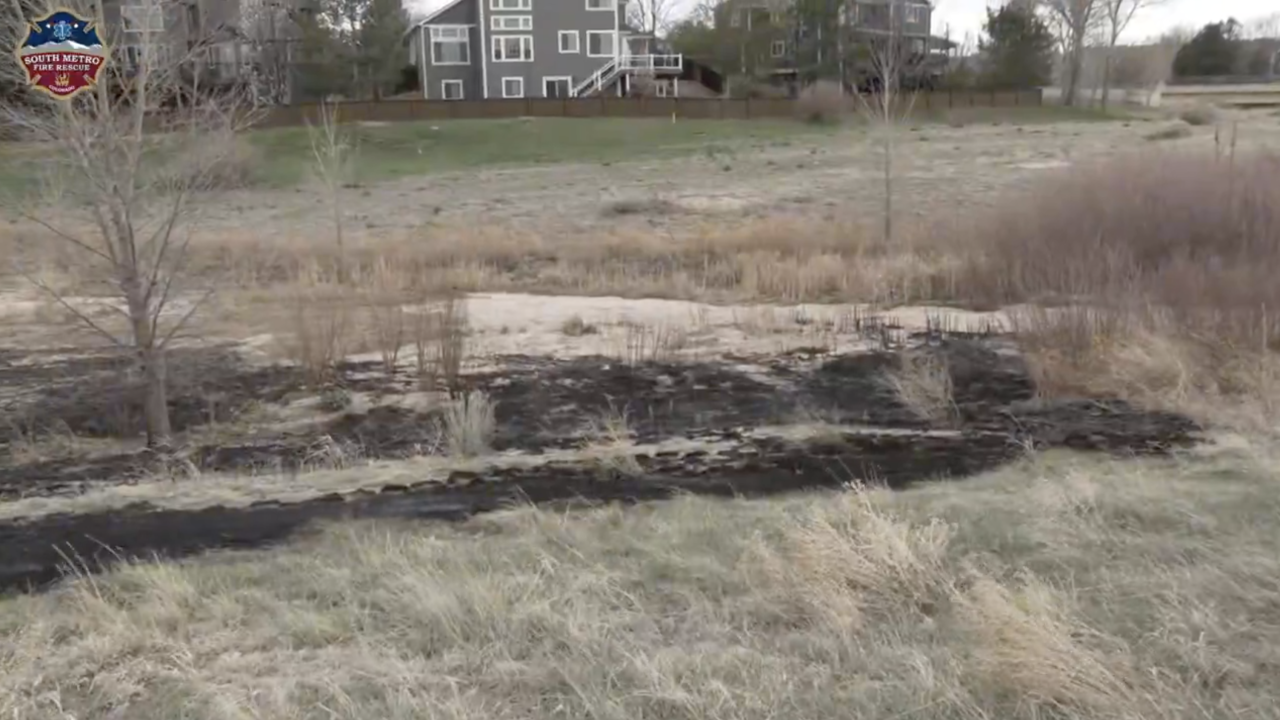With Friday morning's breaking news that authorities are investigating the Quarry Fire as an arson case, Denver7 is taking a look at the varying arson charges in Colorado.
Due to the ongoing investigation, few other details were available on the origins of the fire, which, as of Friday afternoon, has burned 480 acres in Jefferson County since it started on Tuesday. But Kevin Bost, chief of investigations with the Jefferson County Sheriff's Office, confirmed it is "human-caused in some manner."
In addition to the Quarry Fire in Jefferson County, fire authorities at the seven-acre Lake Shore Fire in Boulder County said the small blaze was likely caused by people, though it appeared to have been accidental.
The origins of the Alexander Mountain Fire in Larimer County and Stone Canyon Fire in Boulder County are both under investigation.
More wildfire stories
As of Friday morning, nobody has been arrested in connection with any of the wildfires burning along the Front Range.
If anybody is, there is a possibility that the district attorney's office could file formal charges of arson against them, as well as other charges.
Below, we look at how arson is determined at a scene, the varying degrees of arson in Colorado and how it has played out in the courtroom previously.
How investigators determine an arson
Fire and arson investigators are responsible for looking at a fire scene, collecting evidence, analyzing it and then identifying if a fire was accidental or deliberate, according to the National Institute of Justice (NIJ). The NIJ describes each step in lengthy detail on its website here.
This process includes looking for accelerants, tampered utilities, and specific burn patterns.
The Bureau of Alcohol, Tobacco, Firearms and Explosives (ATF) will sometimes deploy its certified fire investigators (CFIs) to wildfires, as it did for the Stone Canyon Fire. Those investigators are special agents who not only examine the scene and collect evidence, but also act as the lead criminal investigators for field operations, according to the ATF.
"ATF has CFIs located throughout the country who work closely with members of the U.S. Fire Administration, the National Fire Protection Association, state and local partners, insurance companies and other professional arson investigation organizations in the private sector on arson-related investigations," the bureau's website reads.

Arson, defined simply, is the crime of setting a structure or property on fire either intentionally, knowingly or recklessly. Based on the circumstances around the fire, the arson charge may be a misdemeanor or a felony.
If authorities find evidence that suggests this, they can recommend arson charges to the local district attorney's office, which makes a final decision on charges against a person.
Degrees of an arson charge
An arson charge can be broken down into multiple degrees in Colorado. Each one is slightly — but notably — different and carries a different sentence range.
Let's take a look at the difference between each charge and the presumptive punishments.
First-degree arson (Colo. Rev. Stat. § 18-4-102)
This is defined as when a person knowingly sets fire to, burns, or causes a building or occupied structure to burn without consent. This can include if the defendant used an explosive device to start a fire. If the arson is of an occupied structure, this is a Class 3 felony. It is a Class 4 felony if it is an unoccupied building.
The Class 3 felony carries a prison sentence of four to 12 years, and a fine up to $750,000.
The Class 4 felony carries a prison sentence of two to six years in prison, and a fine up to $500,000.
If a defendant is convicted of using an explosive to commit first-degree arson, they will be sentenced in accordance with provisions under C.R.S. 18-1.3-406, meaning the prison sentence range increases to eight to 24 years.
Second-degree arson (Colo. Rev. Stat. § 18-4-103)
This is defined as when a person knowingly sets fire to and damages or destroys any unoccupied property — not a building or other structure — without consent. That is the key difference between first- and second-degree arson, as the former applies to buildings and occupied structures, and the latter applies to all other property.
This charge is also applicable if an explosive device was used to start a fire.
Second-degree arson is broken down into varying levels based on the value of the property involved:
- Petty offense: Value is less than $300
- Class 2 misdemeanor: Value is between $300 and $999
- Class 1 misdemeanor: Value is between $1,000 and $,1999
- Class 6 felony: Value is between $2,000 and $4,999
- Class 5 felony: Value is between $5,000 and $19,999
- Class 4 felony: Value is between $20,000 and $99,999
- Class 3 felony: Value is between $100,000 and $999,999
- Class 2 felony: Value is $1 million or more
The punishment for second-degree arson is based on the cost of the damage.
If convicted of a misdemeanor second-degree arson, a defendant can face up to 364 days in jail, a fine up to $1,000 or both. If convicted of a felony, prison time is possible. The most severe punishment for second-degree arson is 24 years in prison and a fine of $1 million for the Class 2 felony.
Third-degree arson (Colo. Rev. Stat. § 18-4-104)
This is defined as when a person intentionally damages property with the intent to defraud using fire or explosive devices. This means somebody intentionally set something on fire to obtain money in an illegal way, including insurance fraud.
It is a Class 5 felony, meaning the sentence range is one to three years, with a fine up to $100,000.
Fourth-degree arson (Colo. Rev. Stat. § 18-4-105)
This is defined as when a person knowingly or recklessly starts a fire or causes an explosion at their own property or somebody else's, and as a result, endangers human life or safety, or a building or occupied structure.
This is a Class 4 felony if a person was in danger, and carries a presumptive punishment between two and six years, and a fine up to $500,000.
Fourth-degree arson is broken down further in cases where only property was endangered. That breakdown is based on the damage and potential damage of the property:
- Petty offense: Value is less than $299
- Class 2 misdemeanor: Value is $300 to $999
- Class 1 misdemeanor: Value is $1,000 to $1,999
- Class 6 felony: Value $2,000 to $4,999
- Class 5 felony: Value is $5,000 to $19,999
- Class 4 felony: Value is $20,000 to $99,999
- Class 3 felony: Value is $100,000 to $999,999
- Class 2 felony: Value is $1 million or more
If convicted of a felony, prison time is possible. The most severe punishment for fourth-degree arson is 24 years in prison and a fine of $1 million for the Class 2 felony.
Arson cases in court
To convict a person of arson, prosecutors must prove they intentionally, knowingly or recklessly set a structure or property on fire.
In cases of wildfires, many cases come with few or no witnesses and destroyed evidence, which can make a conviction difficult. According to FBI data, more than 35% of all arson cases involve crops or forest (excludes structures and mobile properties).
Several wildfire-related arson cases have made their way through the Colorado courts, though in the three notable examples below, none went to trial.
The 2002 Hayman Fire grew to nearly 140,000 acres and forced evacuations for thousands of people.

Then-U.S. Forest Service worker Terry Lynn Barton admitted to accidentally starting the fire when she burned a letter from her estranged husband in a remote campground ring, according to The Denver Post. A federal grand jury indicted Barton on four felony counts of arson.

Barton pleaded guilty to setting fire to federal forest land and lying to investigators and was given a six-year sentence in federal prison. The state sentenced her to 12 years in prison to run concurrently with that federal sentence. The state sentence was overturned on an appeal, and she was resentenced in 2008 to 15 years of probation and 1,500 hours of community service.

In the case of the 2018 Lake Christine Fire in Eagle County, two defendants, Allison Marcus and Richard Miller, pleaded guilty to a misdemeanor charge of setting fire to woods or prairie after that fire grew to 12,588 acres. The Fifth Judicial District Attorney’s office dismissed three counts of felony arson and amended a felony count of setting fire to woods or prairie to a misdemeanor, according to The Denver Post.
The defendants were sentenced to 45 days in jail in July 2019.
The same year as the Lake Christine Fire, the Spring Creek Fire broke out near Fort Garland.

Jesper Joergensen, a 52-year-old citizen of Denmark, who was reportedly in the United States illegally, was arrested on arson charges. He had assumed his fire pit was extinguished, but embers spread to nearby trees. The Spring Creek Fire burned about 108,000 acres and destroyed nearly 150 structures.
He faced 349 counts of arson.
In April 2022, a judge dismissed the criminal charges against Joergensen after he was repeatedly found unable to stand trial.





Wildfires are now a year-round threat in Colorado. Denver7 is committed to covering their impact and the people working to find solutions to the threat.








